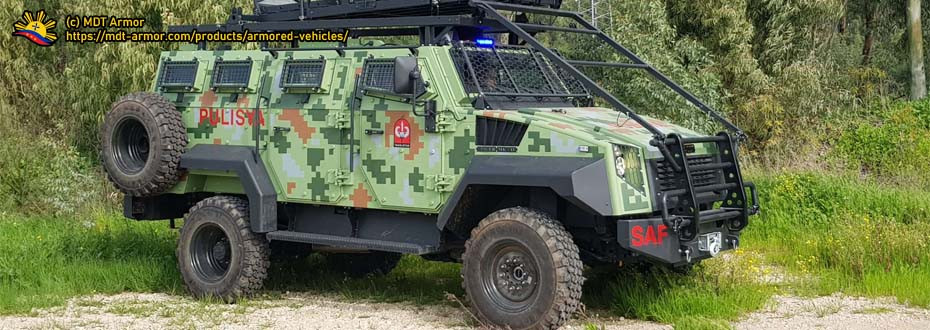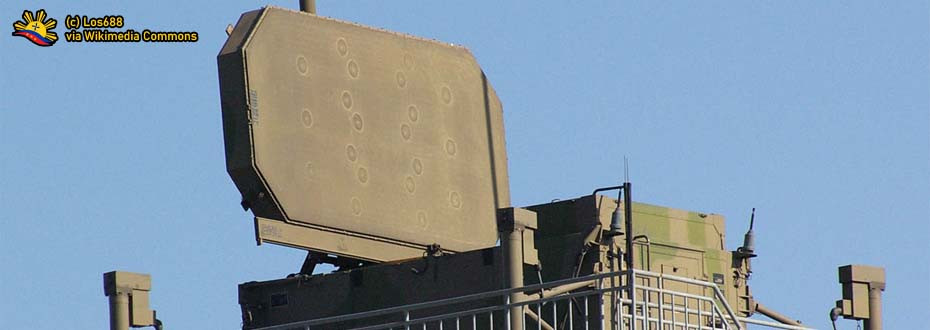Since this was first reported, the Philippine Air Force aspires to have its squadron of new and more capable multirole fighter jets, one that can surpass the current firepower load-out and other features that the FA-50PH that the air service branch currently maintains in service.
As the new information provided from an official portal that forms part of the United States' system for Foreign Military Sales, this topic will delve primarily on the new information involving a known multirole fighter jet made by that country's premier aerospace company, intended for the Philippine Air Force's air defense requirements.
THE OFFICIAL DSCA RELEASE
 |
An artist's rendition of what a Philippine Air Force F-16 Viper will look like.
From Lockheed Martin Facebook Page. |
On a normal Tuesday of April 1, 2025, an information relevant to the Philippine Air Force’s Multirole Fighter Jet Acquisition Program has released on the website of the Defense Security Cooperation Agency or DSCA, providing information on the request of approval for a Foreign Military Sale or FMS of a certain fighter aircraft made in the United States. And, no, this is not another April Fools Joke, as the release refers to an
updated information for a potential sale of F-16 Block 70/72 Viper aircraft.
At the time we publish this article, the previous one is no longer available from the DSCA website, fully reflecting on the updated and most recent release made on the website for the Philippine Air Force’s multirole fighter jet requirements.
At a glance, it refers to the potential sale of at least twenty (20) units of F-16 Block 70/72 Viper multirole fighter jet, of which sixteen (16) are the single-seater F-16Cs, while the remaining four (4) units are the double-seater, conversion trainer F-16Ds for the Philippine Air Force pilots to familiarize more about the aircraft. The estimated cost of the entire package presented is at around US$5.58 Billion, or Php 310 Billion,
based on the exchange rate of US$1.00 = Php 55.57.
The price tag is unsurprising high even at the original budget allotted for the project under the Horizon 2 phase being at around Php 61 Billion, as factors like inflation came into play, not to mention that the offers made through DSCA always come with other components included in the entire F-16 package presented in the website. This includes the number of munitions and spare parts items in the presented package, of which its breakdown will get covered throughout this discussion.
In the previous offer before the update, the details presented on the DSCA website refer to the potential sale of at least twelve (12) units of F-16 Block 70/72 Viper multirole fighter jet, of which ten (10) are single-seater F-16Cs, and the remaining two (2) units are the double seater, conversion trainer F-16Ds.
As usual, aside from the increase in the number of units in the updated release, both the spare parts and ammunition package also increase, ranging from the AIM-9X sidewinder missiles to Advanced Medium Range Air-to-Air Missiles or AMRAAMS, of which reports provided might have the numbers change to make the deal more bearable for the Department of National Defense to consider. Also included are the sensors and other crucial aircraft subcomponents that are part of the F-16 system deployed onboard.
This discussion will delve more into the details surrounding the updated release from the Defense Security Cooperation Agency website, particularly into the breakdown of armaments, spare parts, and aircraft units included in the package as compared to the original 2021 figures.
Going further, the missile systems discussed will also come with a glance, providing details on its capabilities that might help improve the capabilities of the Philippine Air Force; especially if they get this multirole fighter jet aircraft type.
THE NUMBER OF JETS
.jpg) |
From the initial 12 units, the new DSCA release now calls for 20 units, an increase of 8 more units.
File image. |
One immediate change that came from the updated release from the DSCA website for April 1, 2025, as compared to the first iteration way back in 2021, is the number of F-16 Viper units included in the deal, intended for the Philippine Air Force’s multirole fighter jet acquisition project. The change also reflects the direction of the air service branch’s primary objectives in securing the needed numbers under this project, which will cover shortly throughout this sub-topic.
In the original release of the Defense Security Cooperation Agency or DSCA website in 2021, the information provided calls for the sale of at least twelve (12) F-16 Block 70/72 Viper through Foreign Military Sales or FMS arrangement, whereby the breakdown comes down to at least ten (10) single-seater F-16 Block C variant and at least two (2) double-seater F-16 Block D conversion trainer variant. The latter will help pilot aspirants to familiarize the aircraft’s operational function, among other combat purposes.
In the numbers provided in 2021 reflects the original multirole fighter jet acquisition project requirements of the Philippine Air Force of that period, whereby the service branch aims to have at least twelve (12) units of multirole fighter jets that will probably form into a squadron, with a meager budget of around Php 61 Billion.
Of course, given the components released as a package in the DSCA website, the budget required for twelve (12) F-16s plus other components surpassed that of the presupposed budget allotted.
The current 2025 version of the offer has since increased to at least twenty (20) units of F-16 Block 70/72 Viper, of which sixteen (16) units are the single-seater F-16 Block C variant, while the remaining four (4) units are the dual-seater, conversion trainer variants of the F-16 Block D variant. This clearly reflects the Philippine Air Force’s updated numbers for its Multirole Fighter Jet Acquisition Project, of which the Secretary of National Defense Gilberto Teodoro now calls for a total number of at least forty (40) units of this aircraft.
From this, the remaining twenty (20) units of aircraft might still be open to other competitors, especially if the first half pushed through, awarded to the US aerospace company.
The increase in the number of units of F-16 Block 70/72 Vipers on the website release reflects not only on the desires of the Philippine Air Force in finalizing this portion of the multirole fighter jet project, but also for Lockheed Martin to push its marketing further into securing this project. That also means further cementing its foothold in the Philippine defense and aerospace market, adding up along with the C-130J-30s and S-70i Black Hawk Helicopters that the Philippine Air Force purchased from this said manufacturer.
As the numbers added for this new iteration of the multirole fighter jet acquisition project fully delved on, the next portion to talk on is on the munition aspects of the updated release, with comparisons provided between the recent one to the original release in 2021.
This portion, at a glance, has an increase with the number of munitions included and also on the type of munitions provided, some of which might help provide the firepower requirements for a Philippine Air Force multirole fighter jet to use during missions.
THE MUNITIONS
 |
Munitions include the AIM-9X Sidewinder Missile.
Image Source. |
Aside from the number of units mentioned in the upgraded deal for F-16 Block 70/72 Viper, another thing to check in the details is the number and type of munitions that forms part of the package, as each of the presented firepower provides additional capabilities for the said multirole fighter jet’s operational requirements, as the Foreign Military Sales arrangement of the United States DSCA always come with its package as complete, although details might still subject for further negotiation with the Philippine side.
The 2025 updated release provides additional forms of munitions that have not offered in the original 2021 version for the F-16 Block 70/72 offer to the Philippine Air Force, the following will come as a list with a glance on the capabilities of each offered munition for this project, ranging from air-to-air missile munitions to guided bombs and guided bombing kits that can fit on unguided munitions, most of which being new capabilities that will help augment the air service branch’s existing munitions inventory.
As quoted in this spec sheet that talks about the AIM-9 Sidewinder family, the AIM-9X variant has the same rocket motor and warhead as the AIM-9M. Major physical changes from previous versions of the missile include fixed forward canards and smaller fins designed to increase flight performance. The guidance section gets redesigned and features an imaging infrared seeker, and its propulsion section now incorporates a jet-vane steering system for enhanced post-launch ability.
The AIM-120 AMRAAM is a beyond visual range or BVR missile, of which such capability is currently nonexistent in the Philippine Air Force, hence its inclusion might improve the air service branch’s air defense capabilities.
Of course, included in the munitions package list is the 500 lb Mark-82 bombs, of which the Philippine Air Force surely have in its inventory, some of which fitted with kits that form the GBU-12 Paveway II laser-guided bombs for surgical strikes and precision-related mission objectives. All the mentioned munitions will provide the full support for the operational requirements of the F-16 Block 70/72 Viper, as an effort to establish the multirole fighter jet force of the Philippine Air Force.
Aside from the munitions, the next point of discussion that will complete this topic will be on the spare parts support of the package, of which the F-16 Block 70/72 Viper aircraft provided to the Philippine Air Force will not only limit to the units bought but also with spare parts support that will increase its operational time, along with providing the needed support infrastructure that ensures the air service branch’s ability to sustain the operations of the multirole fighters in the following decades of operations.
SPARE PARTS, SENSORS, AND SUBCOMPONENT KITS
 |
Spare engines also come as part of the package.
This is an U.S. Air National Guard photo by Audra Flanagan, via DVIDS. |
Another part of the package that the United States Foreign Military Sales arrangement provided by the Defense Security Cooperation Agency or DSCA on their website are the sensors and spare parts package of the F-16 Block 70/72 Viper, most of which are likely integrated with the units provided for the Philippine Air Force’s multirole fighter jet requirements, with the provided extra numbers intended as a spare parts hulk for prolonged operational airworthiness.
One notable component to point on is the supply of twenty-four (24)
F110-GE-129D or
F100-PW-229 Engines (20 installed, 4 spares), which means the engines come at both installed and spare part configuration that ensures continuous operational airworthiness of the F-16 Block 70/72 Viper, along with the bureaucratic description of providing and including the installed subsystems onboard the aircraft as part of the deal with the Philippine Air Force, aside from discussing the fighter jet units at a glance.
The numbers provided for the F-16 Block 70/72 Viper’s main radar come similarly to the said multirole fighter aircraft’s engines in terms of spare, except that there are two (2) fewer spares for the AESA radar, but still sufficient for operational requirements based on this given parameter.
The said components form an integral part of the F-16 Block 70/72 Viper’s own capabilities, which go beyond its dogfighting and beyond visual range (BVR) missile shooting capabilities.
The latter components mentioned provide the needed information and communication exchange between units of a larger network system employed by an armed force, all playing a crucial role in coordination and quick decision making that defines the outcome of the conflict.
Adding to the spare parts and subcomponents list are the following items: AN/ARC-238 radios; AN/APX-127 or equivalent Advanced Identification Friend or Foe (AIFF) Combined Interrogator Transponders (CIT) with Mode-5, KY-58 and KIV-78 cryptographic devices, AN/PYQ-10 Simple Key Loaders (SKLs); KGV-250X cryptographic devices, Scorpion Hybrid Optical-based Inertial Trackers (HObIT) or Joint Helmet Mounted Cueing Systems II (JHMCS II) helmet mounted displays, and night vision devices (NVDs).
While the list provided on the website of the Defense Security Cooperation Agency or DSCA is more comprehensive than the content of this article, the final items provided come as an integral part of the offered F-16 Block 70/72 Viper as an essential subcomponent installed onboard.
Also, all the components provided in the comprehensive release are all for the improvement of the Philippine Air Force’ capabilities, as this means a lot for the air service branch’s first multirole fighter jet since the AFP Modernization has started.
LOOKING FORWARD
 |
Information received has suggested that there is a promising prospect on the horizon.
File Image. |
As the Philippine Air Force’s multirole fighter jet acquisition project pushes through, there are still some hurdles that need to be overcome prior to this project to get fulfilled, especially if this means purchasing new F-16 Block 70/72 for the air service branch.
What remains now is the formal offer that the United States might bring into this deal that involves the said twenty (20) units of F-16 Block 70/72 Viper multirole fighter jets, along with the subcomponents, spare parts, and munitions included in the package as presented on the Defense Security Cooperation Agency or DSCA website release.
Relating to the grand scheme of ongoing developments within the Philippine Air Force’s push for modernization, the Department of National Defense and the Korea Aerospace Industries or KAI,
has signed a contract calling for
an additional of twelve (12) FA-50 Lead-In Fighter Trainers, which is correlated to the multirole fighter jet program, particularly that this Korean-made light fighter serve as a stepping stone for pilots in terms of experience before embarking on board dedicated multirole fighters.
Ultimately, the goal for the Philippine Air Force is to improve its overall air defense capabilities, sufficient to conduct its duty of protecting the country’s airspace that comprise the entire Philippine Air Defense Identification Zone or PADIZ, while adhering to the entire Armed Forces of the Philippines’ Re-Horizon 3 modernization initiative, itself aligning to the Department of National Defense’ Comprehensive Archipelagic Defense Concept or CADC.
All the mentioned efforts aim for the improvement of the defense of the Philippine republic and its core interest.

.jpg)






















